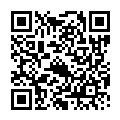| www.tmatlantic.com
Test & Soldering Equipment On-line Store |
|
D.E.V.I.C.E. (Wiki)Calculators Services |
|||||
Filter by first letter
|
CapacitanceCapacitance is an essential feature of any conductor system, its ability to store an electrical charge and create an electric field. It’s measured in farads (F), millifarads (1mF=10-3F), microfarads (1µF=10-6F), nanofarads (1nA=10-9F) and picofarads (1pF=10-12F). Usually capacitance works at altering current and impulse signals. Capacitors are devices for the creation of given capacitance. They are used as ready products or they can be created as plates separated with dielectric within integrated circuits. Physically capacitor is a device to store change (Q=CU) and capacitance is an accumulated charge measure when voltage (U) is given on the capacitor. For linear capacitance there is formula used:
If we integrate this expression, it is possible to obtain an expression for the voltage on the capacitor:
If parallel to capacitance (C) there is resistor (R) switched on, a capacitor charge will be according to exponential law with time constant (RC). The initial part of this process (for t << RC) will be linear. This fact is used in the construction of simple sweep generators of electronic oscilloscopes. Learn more about Capacitors |
Site mapPrivacy policyTerms of Use & Store PoliciesHow to BuyShippingPayment




|



























